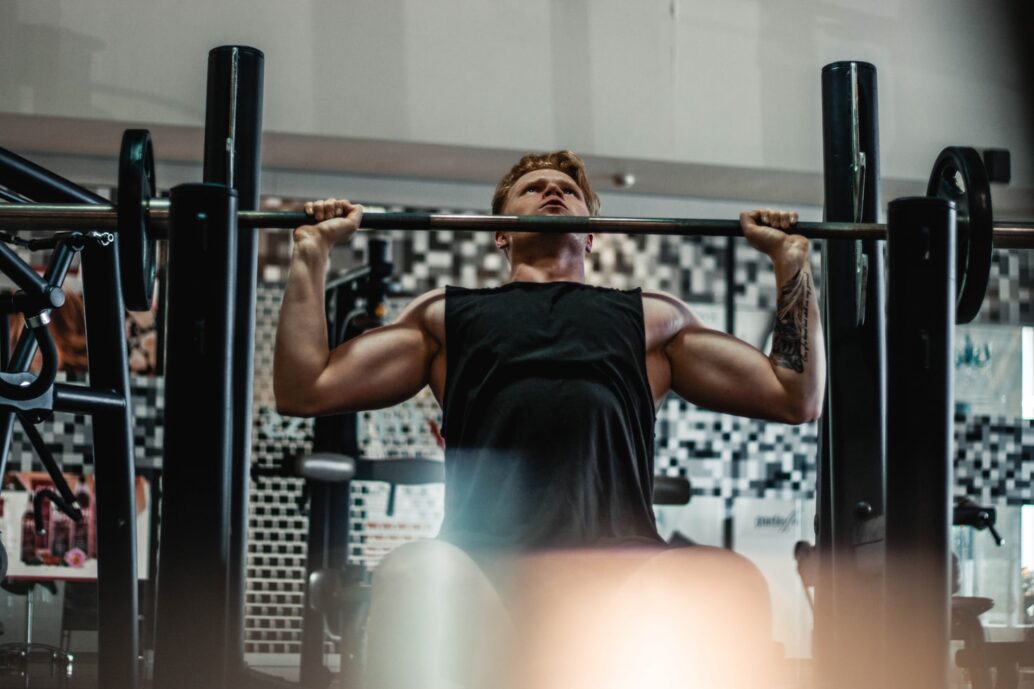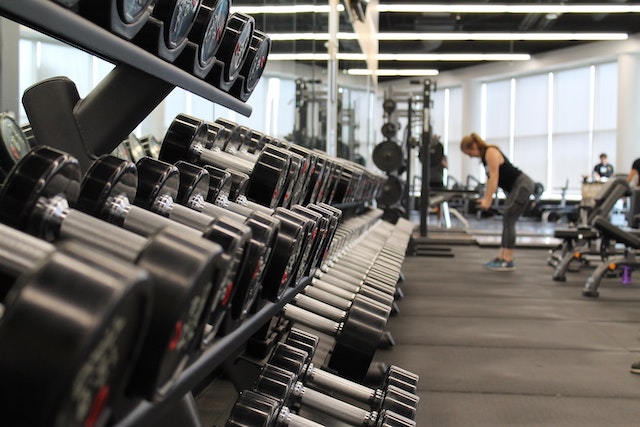Dumbbell vs Barbell: Ever gotten into a never-ending argument with your gym buddy about which equipment has an edge in chest press? Both build big pecs, but knowing small differences can lead to bigger, better, and more preferred results.
This article will help you navigate the differences between them, when to use one and when to use the other? and help you figure out which is best to use according to your goals.
Dumbbell Chest Press VS Barbell Chest Press
| No. | Barbell chest press | Dumbbell chest press |
| 1 | Effective for strength building. | Effective for muscle building and athleticism. |
| 2 | More triceps activation. | More bicep activation. |
| 3 | Less range of motion. | Wide range of motion. |
| 4 | Suited for bilateral training. | Suited for unilateral training. |
| 5 | You can lift heavy weights with a barbell. | Difficult to lift heavier weights with a dumbbell. |
| 6 | Conveniet for progressive weight loading. | Inconvenient for progressive weight loading. |
| 7 | Engages more stabilizer muscles. | Engages less stabilizer muscles. |
- Check :- Average height to bodyweight for bodybuilding
- Must Read :- Barbell Vs Goblet Squats: Which one is better?
Strength & Building Mass:
Talking about building strength, barbell takes the point. According to research, it is confirmed that 20% more weight can be pressed with a barbell than with a dumbbell. (Research)
Since you can lift more weight with a barbell than you can with a dumbbell, you can presumably build more strength with a barbell chest press. Barbell also allows more fine-tuned loading as you can incorporate progressive overloads into your training more easily. This helps maximize tension and prevents strength stagnation while stimulating muscle tissue growth.
Muscular Balance and Symmetries:
The dumbbell chest press comes out ahead when addressing muscular balance and symmetries. While barbell chest pressing, it is possible for your dominant side to take over during the movement. Meanwhile, in dumbbell chest press, each arm moves independently to lift the weight. This allows each side to do equal work and develop equally.
Dumbbells provide unilateral training which can assist you to train your non-dominant side. Over time, the strength imbalance will be reduced, resulting in a more balanced muscle build.
Radius of movements:
Lifting in a full range of motion makes it easier and more efficient for building mass and strength at the same time reducing injury risks. Whereas the reduced range of motion leads to less tension and inferior results. In this domain, dumbbells are a more credible choice.
When chest pressing a barbell, your hands are locked in a single position on the bar and you press up. This motion does not allow your arms to move in their full range of motion, which limits the potential extension of your arms and the impact of your press. Pressing with dumbbells calls for each of your hands and arm to lift the dumbbell and allows you to extend more, which expands your range of motion. This allows more muscles to move and be placed under more tension from the press, increasing your muscle mass.
Muscle Activation:
According to research conducted in Norway, it is proven that although there was little difference in the muscle activity of the pecs and delts for both exercises, the dumbbell chest press used fewer triceps and more biceps as compared to the barbell chest press.
A 2005 study published in the Journal of Strength and Conditioning Research has found that unilateral dumbbell chest presses led to greater core stabilisation in the trunk and greater muscle activation compared to the barbell bench press, which involves bilateral movements.(Research)
Also, dumbbell chest presses involve a greater range of movements which leads to more muscle activation. Therefore, the dumbbell takes the lead in muscle activation.
When to use Dumbbell Chest press or Barbell Chest press?

The selection of a specific technique does not make the other wrong or useless. The selection is made by keeping your desirable physique, body type, muscle mass, strength, goal, and other factors in light. For maximum outputs and building mass, a successful training program is necessary.
Increase Muscle Growth:
If your goal is to build mass and trigger muscle growth, a dumbbell is the most ideal option for you. Since it offers an increased range of motion and more muscle activation which ultimately results in building more muscle. However, if your focus is to train your triceps, going for a barbell chest press might come in handy, since the barbell offers greater triceps activation than the dumbbell which offers greater bicep activation. Therefore, your choice here depends on your priority.
Increase Strength:
If you lack lifting strength and aim to improve in this domain, a barbell chest press is a way to go. You can lift more with a barbell as there is less range of motion and your maximum energy is focused on pushing the bar. Meanwhile, with a dumbbell, the range of motion is wide thus movements consume more energy.
Safety and Muscle imbalance:
A dumbbell is generally safer than a barbell. Dumbbell training is easier on the joints and allows for more natural movements. This makes it suited for newbies as well as for those trying new exercises. Barbell chest press may often require a spotter to look after your reps. With dumbbells, you are in full control of the movement. Dumbbells are superior when addressing muscle imbalance since it offers unilateral training.
Advantages of Barbell Chest Press:
- Better for strength building as you can lift heavier weights with a barbell than dumbbell which leads to more strength building training.
- According to research barbell chest presses leads to more triceps activation than dumbbell chest presses.(Research)
- According to research it is people lifted 20% more weights with the barbell as compared to with the dumbbells.(Research)
- Easier to tune progressive weight loading i.e., you can alter total weight by adding, removing plates easily as you can add minimum weights up to 0.5kg on each side of the barbell.
- Teaches you to engage your entire body while maintaining a specific bar path under pressure.
Disadvantages of Barbell Chest Press
- Less range of motion as your arms move in fixed motion and there is limited room to rotate freely.
- Tough of balance and maintain symmetry as your dominant side may exert more force towards one side.
- Less bicep activation as the movements of the barbell exerts more pressure on the triceps (Research)
- Engages fever stabilizer muscles as the range of motion in limited.
- Not suited for unilateral muscle training. Rather it is made for bilateral muscle training.
Advantages of Dumbbell Chest Press:
- Increased range of motion as you can swing your arms at larger angles freely unlike barbell where movement is limited.
- According to research, dumbbell chest presses encourage more bicep activation due to the nature of arm movement.(Research)
- Engage more stabiliser muscles as the range of motion is wider than barbell chest presses.
- Better for muscle building and overall body athleticism as increased range of motion and more activation of stabiliser muscles encourage greater muscle growth.
- Better balance and symmetry as you are in control of your both arms separately rather than bounded by a single bar.
- Helps in unilateral muscle training as you can train each side, left or right separately.
Disadvantages of Dumbbell Chest Press:
- Less effective for strength building than barbell as you can lift heavier weights with a barbell.
- Difficult to lift heavier weights. E.g., lifting 100 kg with dumbbells is quite nerve-racking than it is with barbell.
- Difficult to tune progressive loading as you cannot add lighter weights on dumbbells set (say 0.5 kg) and dumbbells take bigger jumps in weights e.g., one set of dumbbells is 4-4 kg, the next is 6-6 kg, therefore you increased 4 kg at once which is not the case in barbells.
- According to research dumbbells chest presses lead to less triceps activation. So, if you are targeting more bicep activation, you might be choosing the wrong approach.
So, which one really is better?
As we progress, our body adapts to certain exercises. That is why it is important to alternate from one to other in training cycles so that every muscle gets activated in the process. If you truly want a perfect and balanced chest, integrating both the chest presses in your training sessions will surely yield maximum results. If you have a weaker muscle group, prioritise dumbbell exercises. To gain size and strength, perform heavy lifts with a barbell.


